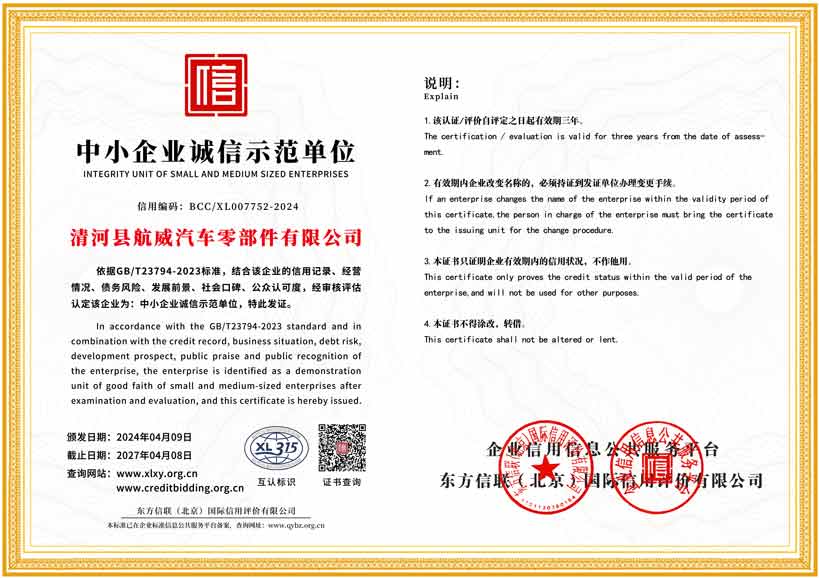How to Properly Adjust Your Hand Brake Cable for Optimal Performance
Understanding the Hand Brake Cable Adjuster Importance, Functionality, and Maintenance
The hand brake, or parking brake, is an essential component of any vehicle, acting as a safety mechanism to secure the vehicle when parked. The hand brake cable adjuster plays a crucial role in the overall performance of this system by ensuring optimal functionality and responsiveness. In this article, we will explore the significance of the hand brake cable adjuster, how it operates, and tips for maintenance to extend its lifespan.
What is the Hand Brake Cable Adjuster?
The hand brake operates via a cable system that connects the hand lever to the braking mechanism at the rear wheels. Over time, this cable may stretch due to frequent use or various environmental factors, leading to a reduction in effectiveness. The hand brake cable adjuster is a device that compensates for this stretch, allowing users to tighten or loosen the cable as needed. This adjustment ensures that the hand brake engages fully when pulled, securing the vehicle and preventing it from rolling away.
The Importance of Proper Adjustment
Proper adjustment of the hand brake cable is vital for several reasons
1. Safety An improperly adjusted hand brake can lead to potential hazards. If the cable is too loose, the hand brake may not apply sufficient force, resulting in a vehicle that can unexpectedly roll. Conversely, if it is too tight, it may cause undue strain on the braking system, leading to premature wear and potential failure.
2. Braking Performance Timely adjustments ensure that the hand brake works effectively alongside the main braking system. A well-adjusted hand brake can enhance overall braking performance, providing peace of mind to the driver, especially on inclines.
3. Cost Efficiency Regular maintenance and adjustments can prevent more serious mechanical issues down the line. Addressing minor adjustments early can save vehicle owners from expensive repairs or replacements associated with damaged brakes due to improper handling.
hand brake cable adjuster

How to Adjust the Hand Brake Cable
Adjusting the hand brake cable is a relatively straightforward process, though it may vary slightly based on the specific vehicle model. Here’s a general guide to adjusting the hand brake cable
1. Locate the Adjustment Mechanism Depending on the vehicle, the adjuster might be located beneath the vehicle or within the cabin near the hand brake lever.
2. Check Cable Tension Pull the hand brake lever to determine if the cable is too loose or too tight. A common guideline is that the lever should be able to pull up to four or five clicks before engaging the brakes. Adjustment might be necessary if the number of clicks exceeds this range or if you feel the lever has too much resistance.
3. Make Your Adjustments If the cable is too loose, you will need to tighten it; if too tight, release some tension. Most adjusters can be manipulated with basic hand tools or by hand.
4. Test After making adjustments, test the parking brake multiple times. Ensure it engages smoothly and holds the vehicle securely when applied. Check for any unusual resistance or noises during operation.
5. Regular Checks It is advisable to check the hand brake cable adjuster periodically, particularly before long trips or after extended periods of vehicle inactivity.
Conclusion
The hand brake cable adjuster is a pivotal part of ensuring the safety and functionality of your vehicle's braking system. Regular maintenance and timely adjustments not only enhance your driving safety but also contribute to the health of the braking system overall. By taking the time to understand how this mechanism works and following simple maintenance practices, drivers can enjoy a reliable and efficient hand braking system that safeguards their vehicle in all circumstances. Always refer to your vehicle’s owner manual for specific instructions and recommendations regarding the braking system and consult with a professional mechanic if you encounter any issues or uncertainties.
-
Workings of Clutch Pipe and Hose SystemsNewsJun.04,2025
-
The Inner Workings of Hand Brake Cable SystemsNewsJun.04,2025
-
The Secrets of Throttle and Accelerator CablesNewsJun.04,2025
-
The Hidden Lifeline of Your Transmission Gear Shift CablesNewsJun.04,2025
-
Demystifying Gear Cables and Shift LinkagesNewsJun.04,2025
-
Decoding Clutch Line Systems A Comprehensive GuideNewsJun.04,2025
